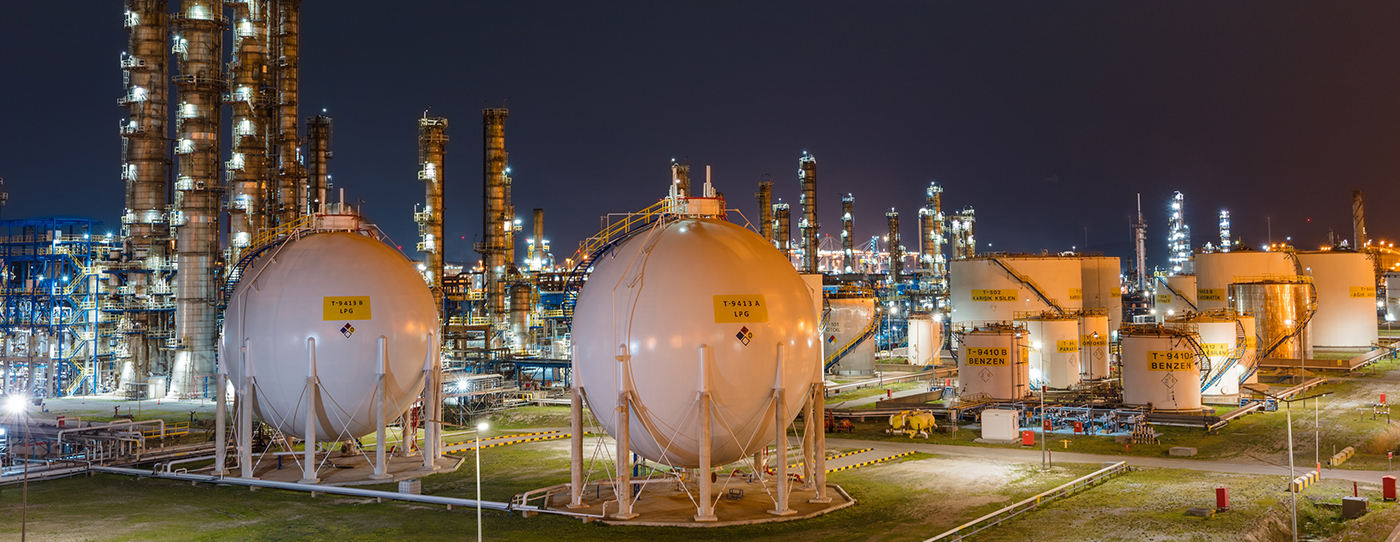
Things to Know About Raw Materials in the Petrochemical Industry
Written by Dr. Mevlüt Çetinkaya, Marketing Manager of SOCAR Türkiye Refinery Petrochemical Business Unit.
Raw materials make up around 80% of the costs in the industrial sector, making their diversity and cost critical factors for determining industry competitiveness. The petrochemical sector, acting as the industry's backbone, plays a crucial role by providing intermediate goods and raw materials. Therefore, understanding the operations, resource utilization, and historical development of the petrochemical sector is essential in this context.
The petrochemical industry involves the conversion of naturally occurring heavy and long-chain carbons into fundamental chemical components like plastics, fertilizers, and fibers using high heat and pressure. It is commonly known as the 'carbon world' as it heavily depends on carbon-based materials. Various products from a diverse range of carbon-rich plant and fossil materials found in nature are utilized as raw materials in petrochemical processes.
Examining the evolution of the petrochemical industry is crucial for understanding the significance of raw materials within it. Countries like the United States, Japan, and European nations took the initiative to establish the petrochemical sector following the technological advancements that emerged after World War II. This can be attributed to the petrochemical industry's supply of a substantial portion of the materials utilized in emerging technologies.
The 1973 Oil Crisis, regarded as one of the most significant crises worldwide, witnessed a dramatic rise in petroleum prices from $1.8 to $12. Consequently, the petrochemical sector attached great importance to naphtha, a raw material derived from petroleum. Moreover, the surge in oil prices led to a redirection of petrochemical investments towards the Middle East and Gulf countries, renowned for their abundant reserves of raw materials.
The collapse of the Berlin Wall in 1989 signified the conclusion of the bipolar world—subsequently, investments were redirected towards high-demand regions in Asia, primarily China and India. However, the scenario shifted again when the United States introduced a new technology enabling the production of ethane, a cost-effective raw material derived from shale gas. This development led to a resurgence of petrochemical investments in the US in 2015. Over the past decade, approximately 15 million tons of petrochemical investments based on ethane as a raw material were established in the country.

Initially, petrochemical products were derived from edible sources. Sugarcane was a commonly used raw material. Interestingly, in today's petrochemical industry, there is a notable shift towards utilizing edible resources as raw materials. The use of bio-based materials, particularly those derived from edible sources, has gained significant attention in the context of sustainability in recent years. Leading oil companies like SOCAR are actively engaged in research and development in this area. They have made substantial progress in producing bio-based ethylene, propylene, polyethylene, and polypropylene using bio-naphtha.
The petrochemical industry's shift to industrial production originated from using fossil resources as raw materials. Naphtha, a crucial product obtained through refining crude oil in refineries, served as the primary raw material for the petrochemical sector, enabling the production of fuels like LPG, gasoline, diesel, jet fuel, and fuel oil.
The petrochemical industry has undergone significant transformations with the widespread use of methane and ethane, derived from natural gas, as primary raw materials. Regions rich in natural gas resources, including the Middle East, Gulf countries, and the United States, have experienced a surge in petrochemical investments due to the cost advantage of these raw materials. These investments have predominantly focused on utilizing ethane as a primary feedstock for the production of ethylene and its various derivative products.
Let's delve into the functioning of the petrochemical industry. A petrochemical complex typically consists of two main facilities: an ethylene plant and an aromatics plant. The products manufactured in these plants serve as the foundational raw materials for other factories. Hence, the extent of ethylene production capacity determines the magnitude of petrochemical involvement. Worldwide, the overall ethylene capacity stands at approximately 200 million tons. Light naphtha serves as the primary feedstock in the ethylene plant, while heavy naphtha is utilized in the aromatics plant. Notably, naphtha holds a significant advantage over other raw materials as it yields valuable by-products like propylene, C4, and pyrolysis gasoline alongside ethylene, and it finds application as a raw material in the production of aromatics.
Liquefied Petroleum Gas (LPG) is composed of propane and butane gases. It is used for heating, as a fuel for vehicles, and as a raw material in the petrochemical industry. PETKİM, in its ethylene plant, utilizes LPG as a raw material alongside naphtha, with approximately 20 percent LPG content. When LPG is used as a raw material, it increases the production of by-products such as propylene and C4.